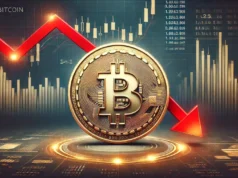
In a development that underscores the growing significance of stablecoins in the cryptocurrency ecosystem, monthly trading volumes for these digital assets have reached an unprecedented $450 billion. This surge coincides with a notable rise in Bitcoin’s price, further highlighting the interconnectedness of the crypto market.
This surge in stablecoin trading volume signifies a broader shift in the crypto landscape, where stablecoins are increasingly being used for a variety of purposes, from facilitating trades on cryptocurrency exchanges to serving as a safe haven during periods of market volatility.
What’s Driving the Surge?
Several factors contribute to this remarkable growth in stablecoin volumes. The increasing adoption of stablecoins by institutional investors, who value their price stability and ease of use, is a significant driver. Moreover, the growing popularity of decentralized finance (DeFi) protocols, which often rely on stablecoins for liquidity and collateral, has also played a role.
Furthermore, the recent regulatory scrutiny of the cryptocurrency market has prompted some investors to seek refuge in stablecoins, perceived as less volatile and less likely to be targeted by regulators. The rise of stablecoins like Tether (USDT), USD Coin (USDC), and Binance USD (BUSD) has been particularly noteworthy, with these three stablecoins accounting for a significant portion of the total trading volume.
The Bitcoin Connection
The parallel rise in Bitcoin’s price and stablecoin volumes suggests a symbiotic relationship between these two asset classes. Stablecoins often serve as a gateway to the crypto market, providing a convenient on-ramp for investors looking to buy Bitcoin and other cryptocurrencies.
Conversely, during periods of market volatility, investors may sell their Bitcoin holdings and move into stablecoins to preserve their capital. This dynamic underscores the crucial role that stablecoins play in the crypto ecosystem, acting as both a catalyst for growth and a safe harbor during turbulent times.
Impact on the Broader Crypto Market
The surging stablecoin volumes have far-reaching implications for the broader cryptocurrency market. They signal a growing maturity and sophistication of the market, with institutional investors and mainstream financial institutions increasingly recognizing the potential of digital assets.
However, the rise of stablecoins also raises questions about their regulatory status and potential impact on the traditional financial system. Regulators worldwide are closely monitoring the development of stablecoins, with some expressing concerns about their potential to facilitate illicit activities or disrupt monetary policy.
Stablecoins: A Double-Edged Sword?
While stablecoins offer numerous benefits, including price stability, ease of use, and accessibility, they also present certain risks. One of the key concerns is the lack of transparency surrounding the reserves backing some stablecoins.
Critics argue that some stablecoin issuers may not have adequate reserves to fully back their tokens, potentially leading to a collapse in value if investors lose confidence. Additionally, the growing dominance of a few large stablecoin issuers raises concerns about centralization and potential market manipulation.
The Future of Stablecoins
Despite these challenges, stablecoins are likely to play an increasingly important role in the future of finance. Their ability to provide price stability, facilitate cross-border transactions, and enable the development of innovative financial products makes them an attractive proposition for both individuals and institutions.
As the crypto market continues to evolve, stablecoins are poised to remain at the forefront, bridging the gap between the traditional financial system and the decentralized world of digital assets. The recent surge in stablecoin volumes is a testament to their growing importance and a harbinger of their potential to reshape the global financial landscape.
My Personal Experiences with Stablecoins
I’ve personally found stablecoins to be invaluable in navigating the often volatile crypto market. They provide a safe haven during periods of market turbulence, allowing me to preserve my capital without exiting the crypto ecosystem entirely. Moreover, the convenience and speed of stablecoin transactions have made them my preferred method for transferring funds between exchanges and participating in DeFi protocols.
However, I also recognize the importance of choosing reputable stablecoin issuers with transparent reserve policies. The recent regulatory scrutiny of the stablecoin market has reinforced the need for due diligence when selecting stablecoins, ensuring that they are backed by adequate reserves and subject to appropriate oversight.
The surge in stablecoin volumes to $450 billion monthly, coupled with Bitcoin’s price rise, marks a significant milestone in the evolution of the cryptocurrency market. Stablecoins have emerged as a critical component of the crypto ecosystem, providing stability, liquidity, and accessibility to investors worldwide. While challenges and regulatory uncertainties remain, the future of stablecoins looks bright, with these digital assets poised to play an increasingly important role in the global financial landscape.










